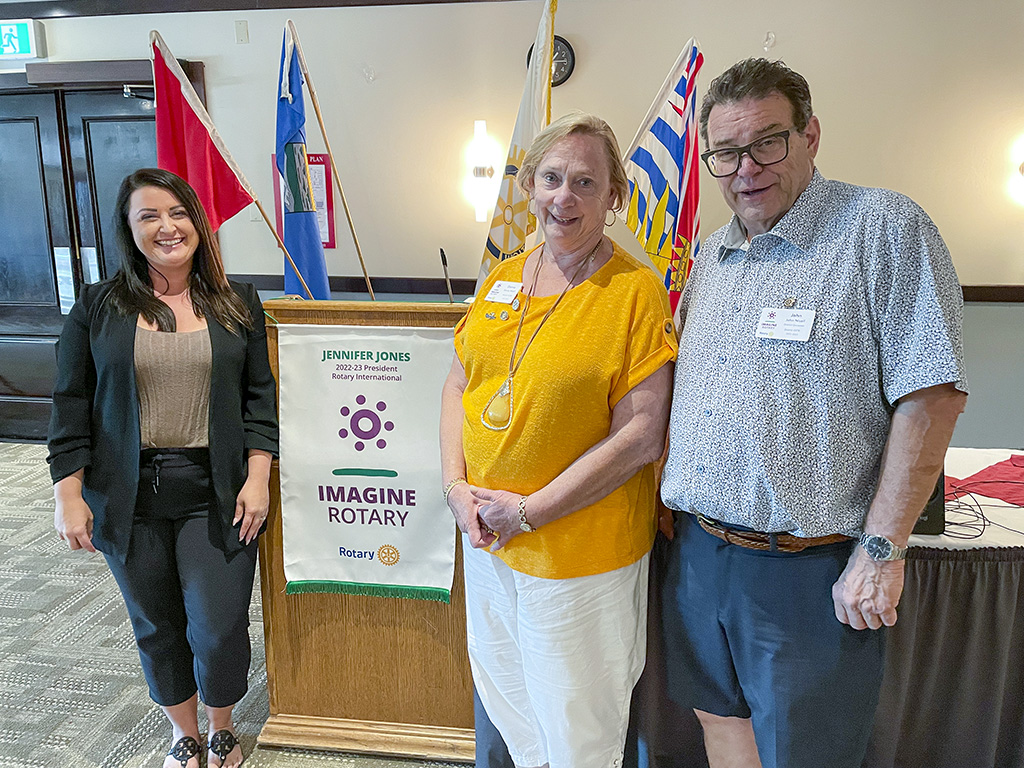
The district governor for Rotary International in northern B.C. and Alberta paid a recent visit to Fort St. John to tour local projects and bring a timely reminder to local residents that there's still much work to do in the fight to eradicate the crippling polio virus.
“Over the last 30 years in co-operation with the World Health Organization, we’ve been able to eliminate polio out of Canada and the U.S. and most of western countries,” says John Nicoll, who visited with local Rotary clubs in August.
“We’ve worked our way through the African countries, we’ve worked our way to the point where we’re now in Afghanistan and Pakistan with the last couple of cases still remaining," he said. “It’s a challenge to get those last couple of cases because polio is only a plane ride away, and if we’re watching the news right now, there are some polio cases that are springing up.”
Nicoll was referring to the first polio case in the U.S. in a decade, discovered in July and where the patient reportedly developed paralysis. The case has prompted public health officials in New York to checking for signs of the virus in wastewater and indicators of its spread throughout state communities.
Canada won’t necessarily be immune from its spread, and Nicoll says the solution is simple: keeping up efforts to ensure people are vaccinated against the virus.
“Most people today have not seen the devastation that polio can wreak on the children of a community. Canada and Alberta and British Columbia went through that in 1954, and the older members in Rotary remember that,” he said.
“We’ve all had an aunt or an uncle who suffered from polio. People haven’t seen that for many, many years, and it’s really simple to avoid it, it’s just a question of having the polio vaccine, which we’ve been giving all over the world.”
Polio is a viral disease most commonly found in children under 5 that invades the nervous system and often causes paralysis, according to the World Health Organization. It’s mostly transmitted through feces, though it can also spread by contaminated food or water.
The disease can be mild, but in severe cases forms will damage lung muscles and make breathing difficult — iron lung ventilators were common in hospital wards at the height of polio outbreaks in the 1940s and 1950s.
According to the WHO, polio cases have plummeted from an estimated 350,000 cases in 1988, to just six in 2021. The agency says one in 200 infections leads to "irreversible paralysis."
Locally, it's been at least 60 years since the last cases of polio were seen, according to local historian and former Rotarian Larry Evans, who wrote about the efforts to eradicate the disease in an Alaska Highway News column last year.
When the polio epidemic first struck Fort St. John in 1948, some 50 patients were treated, according to Evans. An improvised "clover tank" used to for hydrotherapy to support patients is now used as a flower bed near the entrance to the Fort St. John museum.
“This is a disease that we had almost eliminated entirely from the western world and if we allow it to come back...” Nicolls said, trailing off. "It’s an effort we spent millions and millions of dollars on, and avoided a tremendous amount of pain and suffering."
"The number of children that haven’t had polio in Canada, the U.S., and Western Europe is outstanding.”
ARTICLE SOURCE: Alaska Highway News